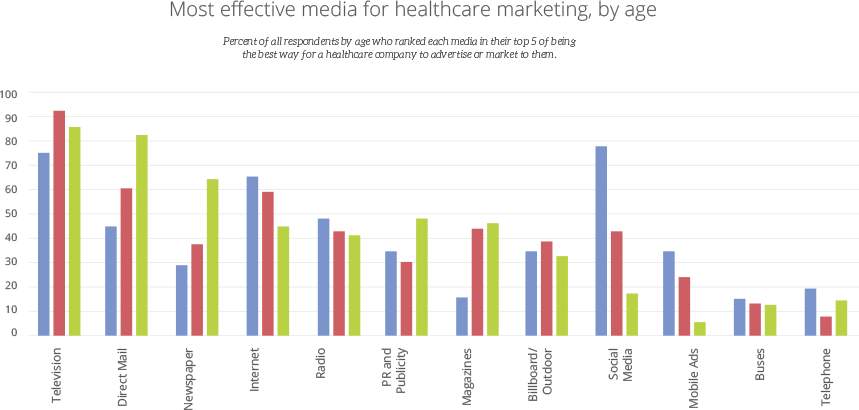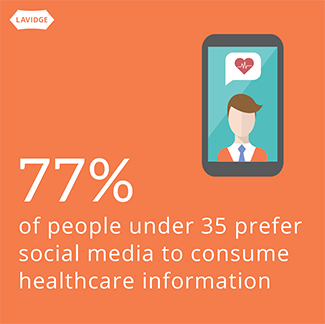Sign up for our LAVY email
and get our bi-monthly newsletter.
This article is a brief abstract of our exclusive study that takes the guesswork
out of healthcare advertising and marketing.
Download the complete 2017 Southwest Healthcare Marketing Report
Here’s the big question: As you age, will you prefer different media to receive healthcare information?
The answer: Yes, and no.
Building a media plan to reach consumers is challenging. It gets even harder when you must plan different campaigns for various target ages. Healthcare marketing is no exception.
To help healthcare organizations with this task, LAVIDGE commissioned a study of consumers throughout the Southwest. We not only looked at what media consumers preferred, but we analyzed data points to discover if a person’s age affected their perception of the best way for a healthcare company to advertise or market to them.

When it comes to preferred media, nearly everyone ranked TV highest. The respondent outliers are those under the age of 35. While 74.7% of this young group still ranked TV very high, it was topped by—wait for it—social media, at 77.2%. This data aligns with other research that indicate a strong correlation between age and accessing social media platforms.
A 2016 study by the Pew Research Center reports that people 18–29 top usage of Facebook, Instagram, Pinterest, LinkedIn and Twitter. Those in the 30–40 bracket are the second largest users of all five platforms. Similarly, the younger you are, the more likely you are to desire healthcare marketing via internet web ads, with those under 35 ranking it third (65.8%).
by the Pew Research Center reports that people 18–29 top usage of Facebook, Instagram, Pinterest, LinkedIn and Twitter. Those in the 30–40 bracket are the second largest users of all five platforms. Similarly, the younger you are, the more likely you are to desire healthcare marketing via internet web ads, with those under 35 ranking it third (65.8%).
Regarding social media, one of our respondents wrote, “I’m on social media several times a day. If I find a useful or meaningful site for health/insurance information, I’ll add it as a friend on Facebook or Twitter so I can get all the updates they publish. At that point, I can read the ones that interest me and skip the ones that don’t.”
Conversely, older respondents don’t believe social media is the best way for them to consume messages about healthcare advertising and marketing. This makes sense, because so few of them are active on social platforms. Pew’s study indicates that while 35% of those aged 65 and older are engaged on Facebook, other platforms are mostly ignored with only LinkedIn breaking double digits at 11%.
We suspected that older respondents would favor traditional media, and this proved true. People 55 and over demonstrate strong preferences for television, direct mail and newspapers.
It might be an unfair stereotype that younger people don’t read, but our study underscores that assertion. Those under 35 ranked magazines and newspapers lower than those who are older.
Finally, let’s note that all ages are shunning bus advertising and telemarketing. Ads on mobile devices also turned in a poor showing. These media channels might prove excellent for some industries, but not for disseminating healthcare messages.
Healthcare marketers—well, all marketers—have long known that the key to effective advertising is to be specific:
specific audiences ⇒ specific messages ⇒ specific channels
The often technical and hard-to-understand nature of healthcare makes this even more true. And it confirms the old “give the people what they want” platitude. Communicate to people where they are and how they want it.
BIO: Stephen Heitz is LAVIDGE’s Managing Director, Interactive. Tim Trull is the agency’s Managing Director, Strategy.

Sign up for our LAVY email
and get our bi-monthly newsletter.